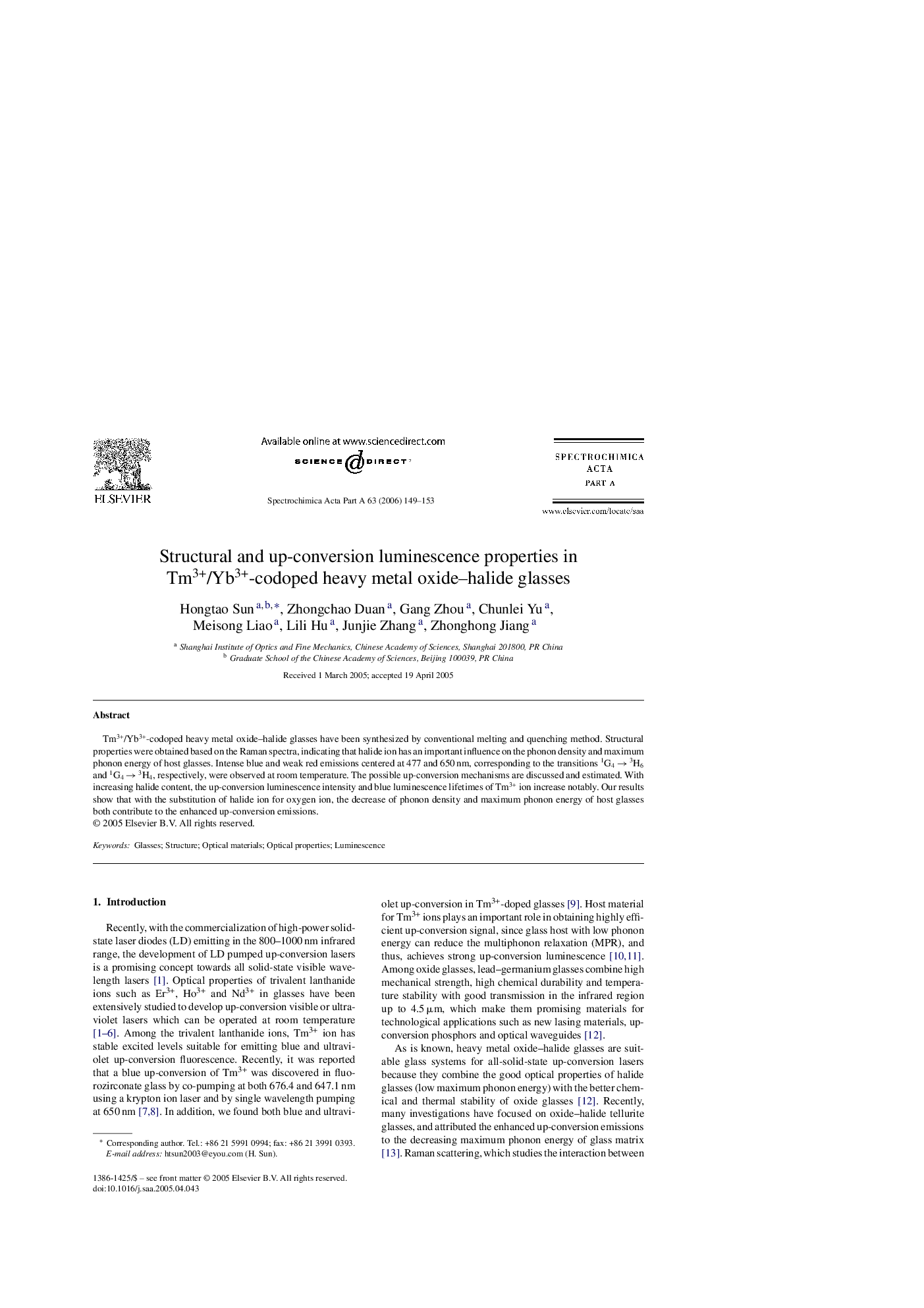| Article ID | Journal | Published Year | Pages | File Type |
|---|---|---|---|---|
| 1236904 | Spectrochimica Acta Part A: Molecular and Biomolecular Spectroscopy | 2006 | 5 Pages |
Tm3+/Yb3+-codoped heavy metal oxide–halide glasses have been synthesized by conventional melting and quenching method. Structural properties were obtained based on the Raman spectra, indicating that halide ion has an important influence on the phonon density and maximum phonon energy of host glasses. Intense blue and weak red emissions centered at 477 and 650 nm, corresponding to the transitions 1G4 → 3H6 and 1G4 → 3H4, respectively, were observed at room temperature. The possible up-conversion mechanisms are discussed and estimated. With increasing halide content, the up-conversion luminescence intensity and blue luminescence lifetimes of Tm3+ ion increase notably. Our results show that with the substitution of halide ion for oxygen ion, the decrease of phonon density and maximum phonon energy of host glasses both contribute to the enhanced up-conversion emissions.
